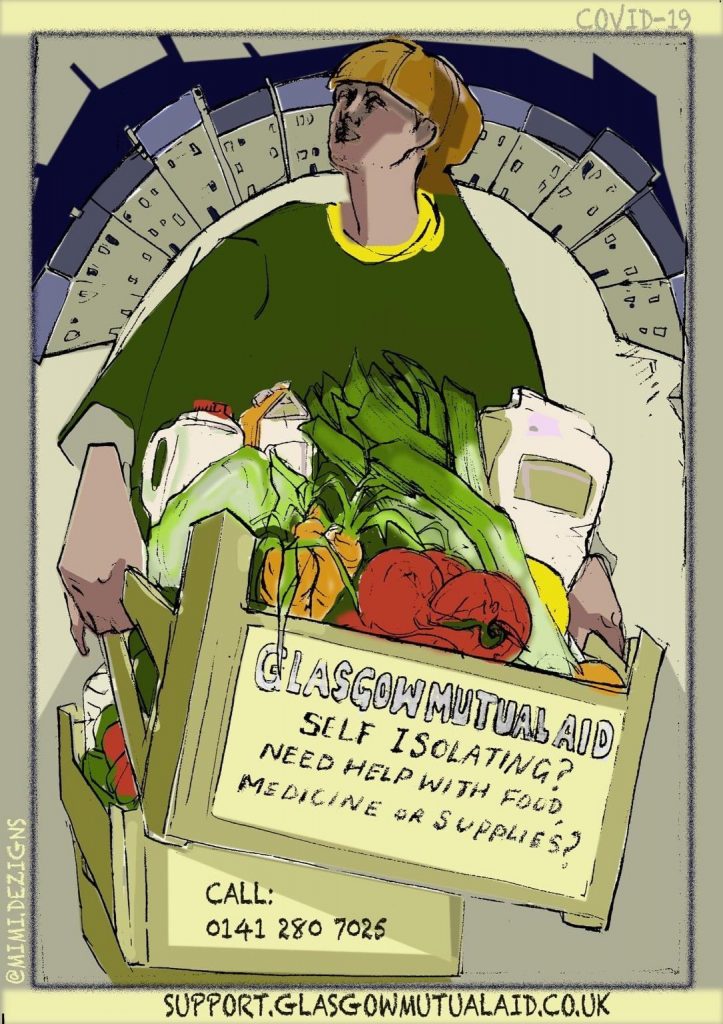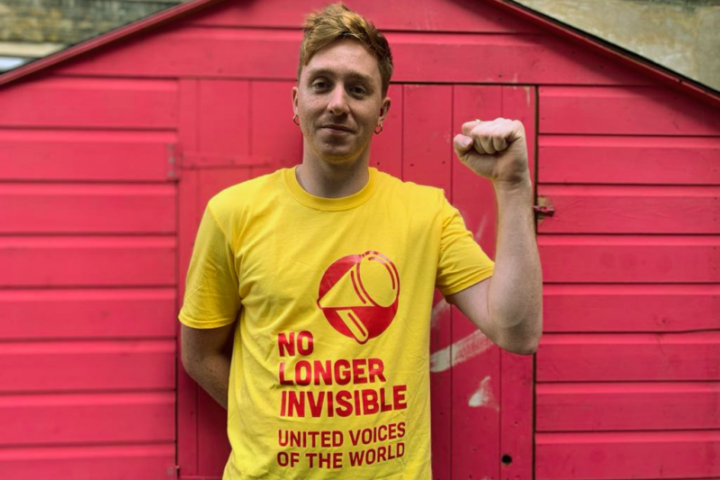Via Anarchist Studies Blog
After weeks of delay and inaction the UK entered its first lockdown on 23rd March 2020, prompting the emergence of mutual aid groups up and down the country. Here we present reflections from Glasgow and Brighton, two cities with markedly different economic and cultural histories in which mutual aid was able to flourish and has continued long into the pandemic.
Glasgow is a former industrial city and the largest city in Scotland. The city has high levels of poverty, with 32% of children recorded as living in poverty in 2019.[1] It also has long-documented issues with ill-health and low life-expectancy, sometimes dubbed “the Glasgow effect”.[2] On the other hand, the city has experienced a significant degree of gentrification in recent years, with a report from 2019 suggesting it had the fastest growing house prices in the UK.[3]
Brighton and Hove is a small seaside city on the south coast of England. Traditionally a tourism and leisure resort, the city’s economy is dominated by hospitality, the creative industries and large employers such as AMEX and the two universities. Whilst often viewed as an affluent city, it contains significant areas of poverty and deprivation. As of 2019, 28% of children in Brighton were recorded as living in poverty.[4]
In this article we discuss our experience of how coronavirus mutual aid groups operate in these two cities, their successes and some of the issues that arose. We come from an anarchist/left communist background and have experienced a variety of campaigns in areas including housing struggles, workplace campaigns and migrant solidarity, so have approached mutual aid with this context in mind.
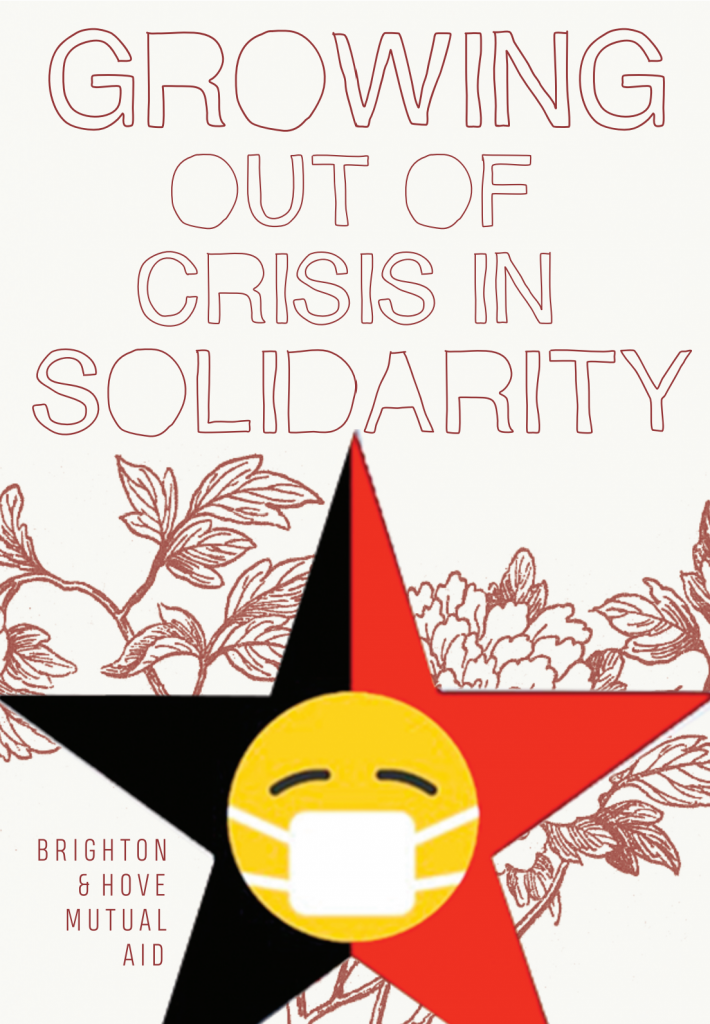
Mutual aid in the broadest sense denotes reciprocal networks of care that support the survival or wellbeing of communities. It appears in moments of crisis (environmental, economic, health, etc.) where state and other forms of support fail or are non-existent[5] and amongst working class and black communities, where the systemic denial of resources is the norm. In anarchist theory it is also often a normative concept with more clearly defined values and practices including critiques of “capitalism, racism, patriarchy and ecological domination”.[6]
The form of mutual aid that proliferated in the pandemic has more immediate antecedents in Britain, notably UK Mutual Aid – a group for marginalised people with several thousand members run from Manchester[7] – and radical projects such as Food Not Bombs. In the US, mutual aid groups focusing on the climate crisis emerged prior to the pandemic. These include Common Ground which formed in response to Hurricane Katrina, and Occupy Sandy responding to Hurricane Sandy. These groups played a role in providing food, medical aid and practical support to those affected by the disaster, as well as organising direct action such as preventing state attempts to bulldoze people’s homes.[8]
Here we address four ways of thinking about mutual aid and its function:
- Mutual aid as something people do in times of need, without even necessarily thinking of it as a political act. This is opposed to competitive “survival of the fittest” notions of human action;[9]
- Mutual aid which is directed by the needs of people in a specific situation, and as such is more effective than state and NGO action;
- Mutual aid which seeks to break down the activist/recipient barrier. It is something that we all feed into as we can, and use as we need;
- Mutual aid as a challenge to state and capitalist power. By seeking to support people in a non-remunerative, non-state directed manner, mutual aid suggests that such a form of relations is possible.
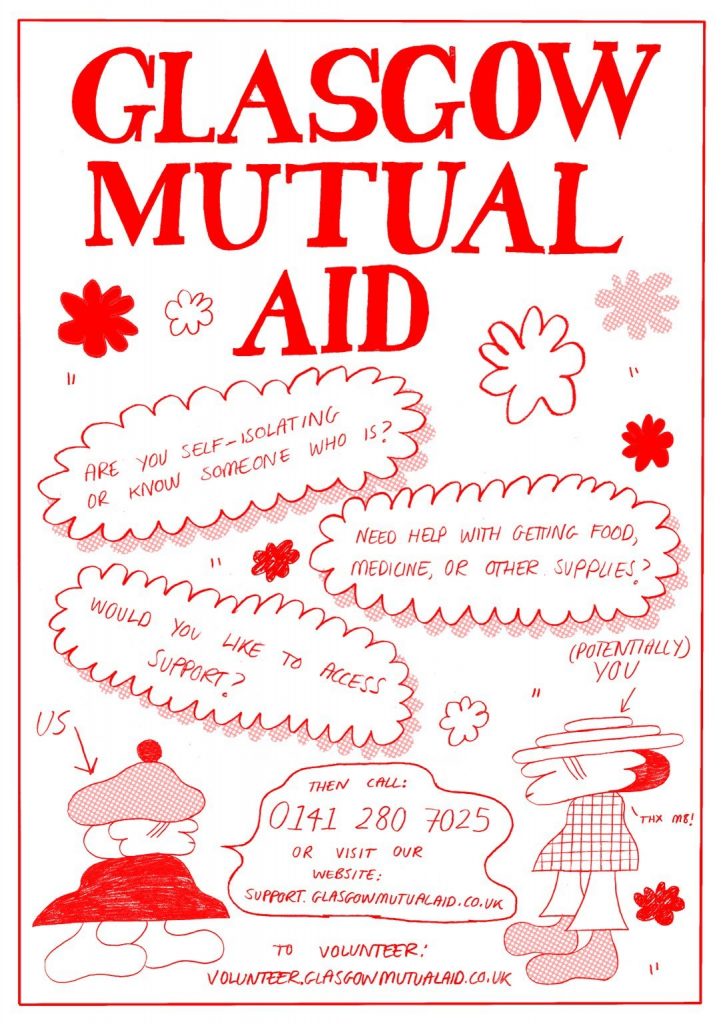
The mutual aid groups that emerged in Glasgow and Brighton in March 2020 were part of the newly established UK Covid Mutual Aid network and drew on this collection of resources in how they were structured and operated.[10] The groups were divided into geographical areas, with working groups also established for specific tasks such as covering the phone lines, referring-on requests and overseeing social media. Initial publicity involved postering, leafleting and social media, though word of mouth has played an increasing role over time. At time of writing, mutual aid groups are still active in Glasgow and Brighton with an apparently lower level of involvement than the start of the pandemic (though activity has increased since January as a result of the third lockdown).
When someone approaches a group for support they can either phone or fill-in an online referral form. The phone and referral teams pick this up and pass the requests on to designated “area coordinators” in the requester’s area. Area coordinators will then send the request to volunteers in the area to see if anyone is able to help, and pass on the details to any volunteers who can respond to the request. If it isn’t possible to provide support, the area coordinator will respond to the requester to let them know this and suggest other options for help. Where we can’t find volunteers to act as area coordinator this role is taken on by the phone and referral teams. All of this is underpinned by an administrative structure of spreadsheets, records and online systems – this work was done by volunteers with IT expertise who quickly created the systems at the start of the pandemic and then refined them over time in response to the needs of the group.
Where a request is more complex or is beyond the capacity of the mutual aid group we can refer people onto other organisations who can help. Mutual aid groups build-up links with other local organisations, charities etc., and put together signposting documents with details of who can be contacted to help with different requirements. We also collect donations to help provide support to those in crises (though fundraising isn’t a focus of the groups).
If a requester needs repeat support, the first option is to try to make a regular arrangement with the same person and to build an ongoing relationship with that person. This is felt to be valuable in order to build a personal connection, create links of solidarity and help break down the “service provider/recipient” distinction that can form. If they are unable to arrange support from the same person then they can submit another request so that we can find someone else to help.
In keeping with the collective, community based nature of the support, decisions are made collectively and horizontally. Each area and working group have their own regular online meetings, whilst there are also regular meetings for the mutual aid group as a whole. These meetings are used to discuss how things have been going, raise issues and decide how to adapt to the changing situation. Roles such as facilitator and minute taker are rotated and decisions are made on a consensus basis.
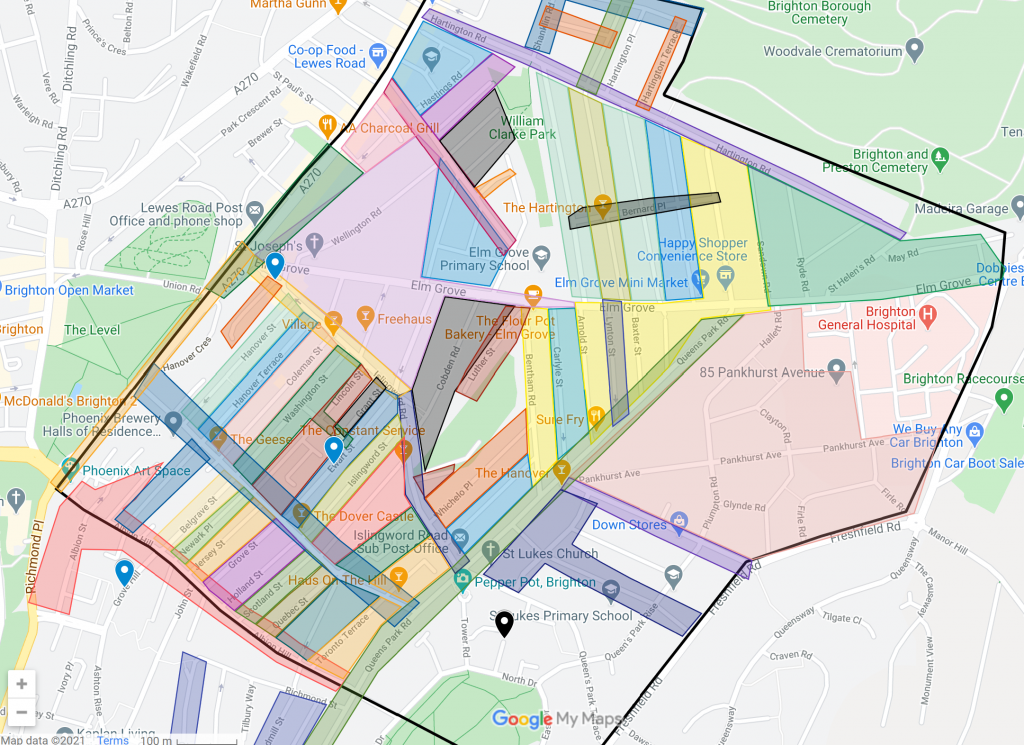
The circumstances of the pandemic created opportunities for organising in a way that we hadn’t experienced in other groups. With the dismantling of the UK welfare system, increasingly punitive conditions attached to unemployment benefits, and ratcheting-up of living costs (particularly housing), it has become more and more difficult over recent decades for those who want to carry out organising to avoid having to also work full-time. Once in full-time employment, people find they have little time and energy to put into organising on top of their work commitments. This leads to issues with burnout, groups fizzling out and a tendency towards bureaucratisation as a lack of volunteers means that paid organisers take over the running of groups.
In contrast to this, the particular nature of the coronavirus pandemic meant that a lot of people suddenly had the time and energy to devote to organising mutual aid. Workers who were furloughed or otherwise out of work now had the time to devote to providing support, whilst others who had moved to working from home were no longer burdened by travel time and by the demand to be seen to be constantly working (“presenteeism”), making it easier to spend time on other activities.
Evidence of the time and energy people had to get involved in mutual aid can be seen in how quickly such a complex system of support was set up, with structures for signposting networks, directing requests for support, and training new volunteers being set up in a matter of weeks. It can also be seen in the success of mutual aid groups, in bringing together a broad network of volunteers that went beyond the usual “activist” networks. For example, in Glasgow, taxi and minicab drivers who found themselves with fewer fares joined the mutual aid group to help deliver parcels to those isolating.
Mutual aid groups were able to connect with pre-existing community networks of support. In Brighton, Facebook groups such as the Community Noticeboards have existed for several years as networks for mutual support within localities. It seems likely that the relationships and familiarity of online community organising from these helped the mutual aid groups to get up-and-running quicker than they might otherwise have done.
As well as people’s time, lockdown freed up a number of private spaces to be used for collective projects. In Brighton, the Balfour food bank was established in a school closed at the start of the pandemic. Similarly, in Glasgow, three different spaces around the city have been used as food points for coordinating deliveries, including the Govanhill Baths (a charitable community hub) after they were forced to close. Of the three food points, two wound-up after the first lockdown, whilst one in Pollockshields continues to operate and acts as a focal point for the local mutual aid group.
Another notable example of this is Cooperation Birmingham’s use of the closed Warehouse Cafe as the base for a solidarity kitchen, providing hot cooked meals for people self-isolating during lockdown.[11] The initiative has been hugely successful, expanding to the point that the city council has sought to establish formal relationships and they have been offered funding to develop a broader food sovereignty project.
Mutual aid groups have been marked by the fluidity of their role in response to the changing demands of people in the pandemic. Early on, the focus was on those isolating in response to the lockdown, with a lot of requests to pick up shopping or prescriptions. As time went on, however, more and more of the requests were from people who had been suffering even before the pandemic, and we had to learn how to collectively respond to more complex issues around housing, poverty, mental health and support for migrants.
In response we built up links with other groups already operating in these areas, for example the No Evictions campaign in Glasgow that is campaigning to support migrants currently housed in hotels around the city, or Brighton’s ScrubHub which provided Personal Protective Equipment (PPE) for NHS workers. We also took on new roles and responsibilities in response to the requests made of us. In both cities we created services to deliver furniture and other household items, while in Glasgow a mental health working group was set up to respond to mental health support needs.
Another important aspect of the mutual aid groups has been our refusal to take-on a gatekeeping role when responding to requests for support. With most state agencies and charity groups, support is tied up with a series of conditions and means tests, which act as a disciplinary and moralising force. People in need are divided into the “deserving” and “undeserving”, with the undeserving determined to be personally and morally responsible for the desperate situation they find themselves in. Furthermore, these services often bring people into contact with police, immigration, social services and other state agencies in a way that can be dangerous to a variety of marginalised groups.
Mutual aid, in contrast, seeks to provide support without asking questions. This allows us to provide support to those who might otherwise have been denied it. Our signposting networks and understanding of bureaucratic and gatekeeping demands also enables us to act as an intermediary for those in need and help them receive support. We are also very careful to try to understand people’s circumstances and not to involve any bodies that may be a danger to them. We do not work with police or immigration agencies.
Here mutual aid groups are important both for their ability to connect with a larger section of those in need and for their ability to offer continuing support throughout the pandemic. Forms of support from official bodies such as councils and the Red Cross were a feature of the first lockdown, however these were limited to a narrowly defined list of requests related to the pandemic and many were quietly wound down as numbers fell in the summer. In Brighton the council also made some attempts to create their own version of mutual aid support but this didn’t seem to get off the ground. In contrast, the non-official mutual aid networks have operated consistently since last March, and as we haven’t had the same narrow object focus as the official bodies we have been able to engage in a broader range of issues.[12]
In anarchist thinking, one of the central claims made about mutual aid is that collective organisation is much better at responding to the needs of those involved than hierarchical business, the state and charities. Over the pandemic, mutual aid groups have been particularly successful in building links and delivering support to people who otherwise would have had none or very little. One example in Brighton is the MA Donations group which furnished flats for a number of families following a request from a desperate social worker who didn’t have any resources to do it themselves.
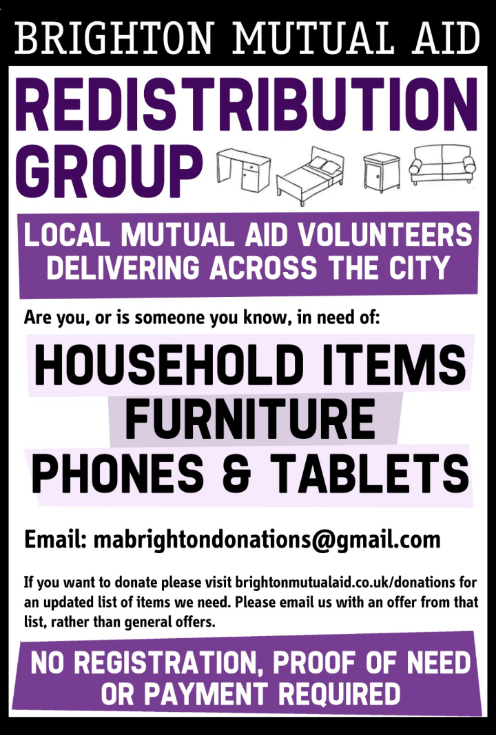
There were a number of issues that we experienced, in addition to the novel situation in which we found ourselves. One is the difficulty of trying to break down distinctions between “service provider” (the volunteer dedicating their time and energies) and “service user” (the person receiving support). This dichotomy echoes official and bureaucratised groups, and has a variety of negative effects, disempowering those who receive support (who maintain a passive relationship to the group) and creating an “activist” mentality in those who provide support, engendering a sense of ownership.[13] Instead of building networks of solidarity, this replicates capitalist structures and hierarchies.
In our experience many of the people requesting support don’t have a clear idea of what mutual aid is, assuming we are another state agency or charity. It has to be explained that mutual aid is closer to the notion of “neighbours helping each other out” than a state service. There is also an apparent divide between the bulk of the volunteers (younger, university educated, more financially secure, in good health) and those requesting support (older, non-university educated, less financially secure, in poorer health). Whilst in theory anyone can contribute and anyone who catches the virus may need support, this divide has meant that the distinction between the two groups feels more definite in reality.
Some methods for overcoming this have been suggested, for example encouraging those isolating to get involved in the phone team, which could be carried out from home. However there has been pushback from those concerned about sending the message that we would only support people who became involved in some way. There are also practical issues with people getting involved, for example the reliance on online systems excludes those without smartphones, computers and reliable internet connections.
This situation was also exacerbated by the need for social distancing. Divisions between provider and recipient can sometimes be broken down through face-to-face interaction and socialising. This creates links on a more human level and can build a sense of solidarity, as can be seen in the collective meetings held by Housing Action Southwark and Lambeth (HASL).[14] Online meetings filled this gap to some extent, but lacked the social element and tended towards being “organiser-only”. That said, in Brighton it has been encouraging to see local groups self-organising socially distanced meet-ups and safe in-person contact.
A related issue was the reliance on a few people with more time to put into the group taking on much of the organising work. This creates issues with informal hierarchies and can lead to burnout as key organisers find themselves doing too much, which in turn creates difficulties filling the gap when key people drop out.
This has been a problem in both Glasgow and Brighton. In Glasgow, the area coordinator role has been particularly demanding, resulting in us being unable to find coordinators for certain local groups. Where coordinators can’t be found, this role has had to be taken on by the phone team, which puts extra pressure on them and can lead to further burnout as a result. Similarly, in Brighton, it has often been notable how particular individuals have been key to making the groups work, leading to concerns that there aren’t enough people with the energy to hold things together in the longer term.
Another issue concerns how information is “safeguarded” and how responsibility operates within the groups. In both Glasgow and Brighton a lot of information is shared via WhatsApp groups and spreadsheets that are accessible to a variety of people, with little in the way of vetting. To some extent this can be rectified by restricting information to the phone team or area coordinators, however, given that there is little vetting for these roles either, there are still concerns about how they could potentially use the information.
Safeguarding has also been a key issue in other groups and campaigns we have been involved in, pre-pandemic. The approach has tended to be handing out responsibilities first, and responding to issues with individuals’ behaviour as they arise. However, the smaller and more insular nature of these radical political groups means that there are more social ties within groups, perhaps making it easier to judge the trustworthiness of an individual taking on a role. Furthermore, the less anonymised nature of face-to-face as opposed to online meeting makes it harder – in theory – for someone with malign intentions to take on a role and gain access to sensitive information.
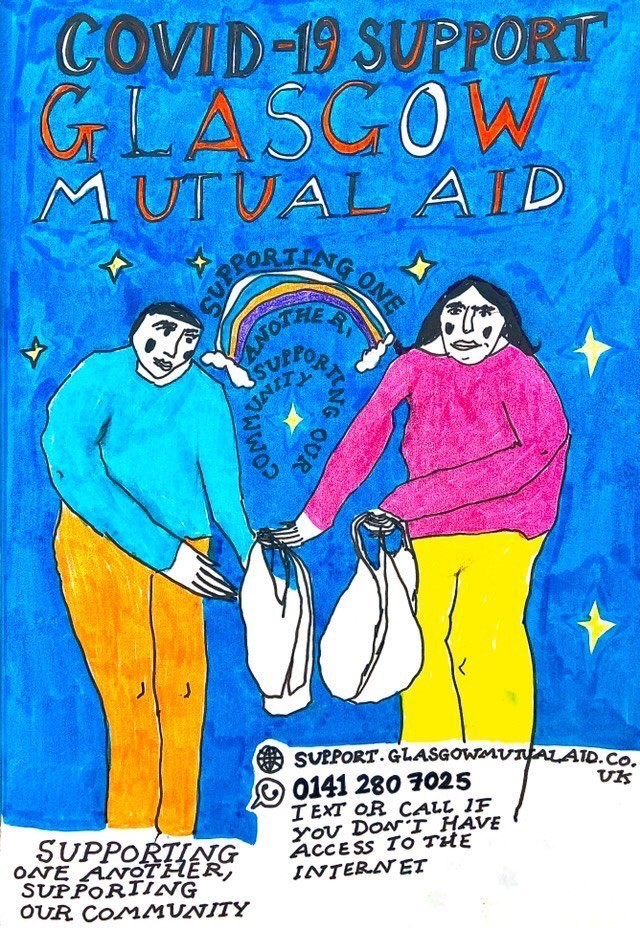
Our experiences of coronavirus mutual aid groups is that they don’t have a specifically anarchist position or clearly defined critique of the capitalist system, in contrast to more explicitly political campaigns we have previously been involved in. This in part reflects the broader range of people involved in these groups compared with the smaller groups with a shared political analysis we’ve found elsewhere. Another factor is the urgency of the crisis, which meant that groups needed to be set up quickly without having a lot of political discussions beforehand.
That is not to say there is no political critique or analysis whatsoever. For example, mutual aid social media accounts regularly rebroadcast posts from other, more explicitly political groups we work with, such as migrant support groups. Questions about whether and how mutual aid groups can take a more explicitly political stance have been raised in group meetings, though these haven’t generally resulted in an agreed position. There have also been experiments in other ways to communicate our aims and outlook. These include craft projects and working on a GMA zine in Glasgow, something that has the potential to involve those who have received support by asking them to tell their stories. In Brighton, there are queer and BIPOC forks which have more explicit radical commitments, and contact with other groups in the radical eco-system has gone some way towards spreading political ideas.
This also relates to a broader question about the role of mutual aid groups. Whilst mutual aid has a history in radical organising, critics point to how it can be co-opted into the functioning of the capitalist system. Here a good example is the “big society” slogan used by the Conservative party in the 2010 election, which reflected their belief that austerity and cuts to the already threadbare social safety net could be offset by local voluntary provision. Far from challenging the capitalist system and the state, mutual aid is here welcomed as a way to prop up disintegrating state support.
It is certainly true that we often received requests for things that reflected the erosion of state support. For example, in Glasgow we received a number of requests for prescription pick-ups where the requester had been specifically told by the pharmacy that they wouldn’t deliver but that we may be able to help. There have also been examples in London of local councillors using concerns around safeguarding to take control of mutual aid groups, seeking to subsume them under council leadership.[15]
With today’s hyper-complex social and economic structures, it is difficult to make straightforward claims about the role of mutual aid in resisting state and economic power. However, we would say that there are significant ways in which mutual aid points towards a reconfiguration of social relations. Our refusal to gate-keep and desire to try to break down the provider/user model stands in contrast to official social services and charities. We always insist that mutual aid is based on a principle of community support and solidarity, and that the relationships formed as part of this are qualitatively different from those built by state bodies or NGOs.
Finally, whilst there may be some discomfort in finding ourselves having to respond to the disintegration of the social democratic safety net, seeing the solidarity that has arisen in its absence is reason to hope that mutual aid may turn out to be prefigurative after all. For us, it demonstrates a shared sense of the value of lives that are systematically rendered as “disposable” through the normal systems of governmentality. Rhiannon Firth makes the point well in her recent book on mutual aid:
Rather than reproducing capitalism. Mutual aid rather tends to reproduce life – potentially radical life – that is either disposable or a burden to capitalism. Whilst it may compensate for the withdrawal of the state, this does not mean that the state would step in in the absence of mutual aid groups, rather, people, mostly working class or otherwise marginalised, would simply suffer and die.[16]
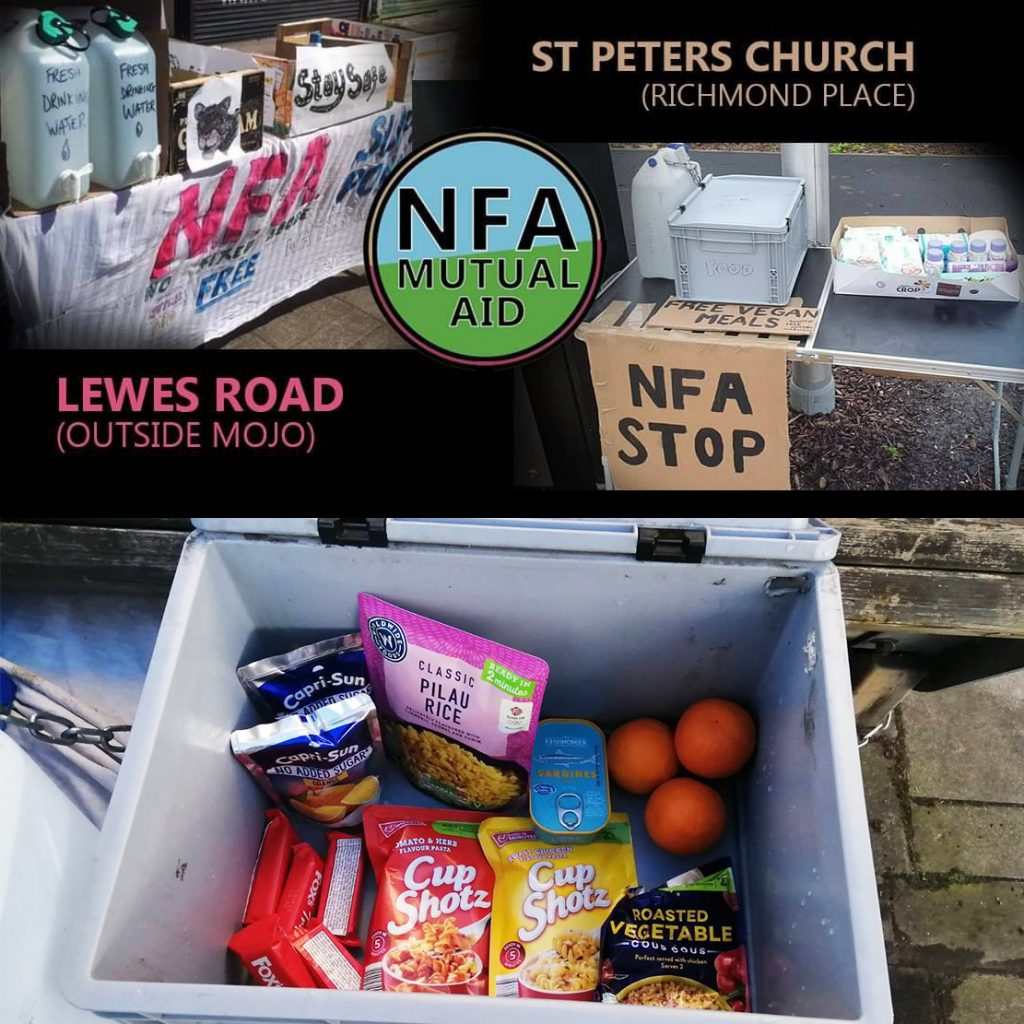
To conclude, we reflect on the longer term prospects for mutual aid groups. Whilst a lot of the issues coronavirus mutual aid groups have been responding to will no doubt continue beyond the present crisis, it seems to us that their current forms of organising are unlikely to be up to the task. The reliance on volunteer activity means that as people “return to work” or stop working from home they will no longer have the time or energy to be involved to the same extent. This was already seen as people started drifting back into workplaces over the summer, leading to a reduction in volunteer numbers.
There are also questions as to whether the openness in direction that has marked organising up to this point is sustainable in the longer term. As we move away from the immediate impact of the pandemic, disagreements over how to respond to the ongoing crises in people’s lives are likely to become more apparent. In the absence of a galvanising “task-at-hand” there is likely to be tension over whether mutual aid groups become more explicitly radical in outlook, on the one hand, or move towards a charity bureaucratised model on the other. Furthermore, even in our experience of more radical groups and campaigns, it is hard to maintain energy, enthusiasm and focus over the mid- to long-term, with a tendency towards drift, atrophy and internal personal and political conflicts when not engaged in urgent or immediate struggle.
Coronavirus mutual aid groups may struggle in the longer term. However, their achievements and the lessons learnt provide valuable experience in the context of cascading social, economic and environmental crises.
Information on Glasgow Mutual Aid can be found on the group’s Facebook page: https://www.facebook.com/groups/glasgowmutualaid/
Information on Brighton and Hove Mutual Aid can be found on the group’s website: https://www.brightonmutualaid.co.uk/
References
[1] End Child Poverty Coalition and Loughborough University (2020), ‘Child poverty in your area 2014/15 – 2018/19’ [interactive map], October. Available at: https://www.endchildpoverty.org.uk/child-poverty-in-your-area-201415-201819/
[2] Joe Cowley, John Kiely and Dave Collins (2016), ‘Unravelling the Glasgow effect: The relationship between accumulative bio- psychosocial stress, stress reactivity and Scotland’s health problems’, Preventative Medical Reports 4: pp. 370–375. Available at: https://www.ncbi.nlm.nih.gov/pmc/articles/PMC4979043/
[3] Unatttributed (2019), ‘Glasgow has fastest growing house prices in the UK’, Financial Times, 12th June. Available at: https://www.ft.com/content/c7538da2-878d-11e9-b861-54ee436f9768
[4] End Child Poverty Coalition and Loughborough University (2020), ‘Child poverty in your area 2014/15 – 2018/19’ [interactive map], October. Available at: https://www.endchildpoverty.org.uk/child-poverty-in-your-area-201415-201819/
[5] For more on this notion of mutual aid see Rebecca Solnit (2009), A Paradise Built in Hell: The Extraordinary Communities That Arise in Disaster, Viking Adult.
[6] Rhiannon Firth (2020), ‘Mutual Aid, Anarchist Preparedness and COVID-19’ in J. Preston and R. Firth (eds), Coronavirus, Class and Mutual Aid in the United Kingdom, Palgrave Macmillan, p. 70.
[7] https://ukmutualaid.group/
[8] Participants in these groups later formed Mutual Aid Disaster Relief. See https://mutualaiddisasterrelief.org/about/
[9] An early proponent of this notion of mutual aid is Peter Kropotkin, who posited mutual aid as a driving force of human and non-human development in opposition to the ‘survival of the fittest’ notions of the Social Darwinists. See Mutual Aid: A Factor of Evolution (1902).
[10] https://covidmutualaid.org/
[11] Ruiz Cayuela (2020), ‘Organising a solidarity kitchen’, Interface 12(1): pp. 304-309.
[12] OpenDemocracy have published a comparison of mutual aid groups with the NHS Volunteer Responders Service, highlighting the ways in which mutual aid has been more effective in responding to specific needs than state-led programmes: ‘Creating a hyperlocal infrastructure of care: COVID-19 mutual aid groups’, openDemocracy, 12th June. Available at: https://www.opendemocracy.net/en/openmovements/creating-hyperlocal-infrastructure-care-covid-19-mutual-aid-groups/
[13] For more on this see Anonymous (1999), ‘Give up Activism’, Do or Die, Issue 9. Available at: https://libcom.org/library/give-up-activism
[14] In HASL meetings participants’ housing issues are discussed collectively in groups, and the group as a whole works on a strategy to demand better housing. Everyone in the group is encouraged to participate, childcare is provided and translators are used to involve those who are not comfortable speaking in English. Participants bring and share food to help create a relaxed, sociable atmosphere. For more information see https://housingactionsouthwarkandlambeth.wordpress.com/
[15] Carl Spender (2020), ‘Local councils are already trying to sabotage the mutual aid networks’, Freedom News, 16th March. Available at: https://freedomnews.org.uk/local-councils-are-already-trying-to-sabotage-the-mutual-aid-networks/
[16] Rhiannon Firth (2020), ‘Mutual Aid, Anarchist Preparedness and COVID-19’ in J. Preston and R. Firth (eds), Coronavirus, Class and Mutual Aid in the United Kingdom, Palgrave Macmillan, pp. 81-82.

